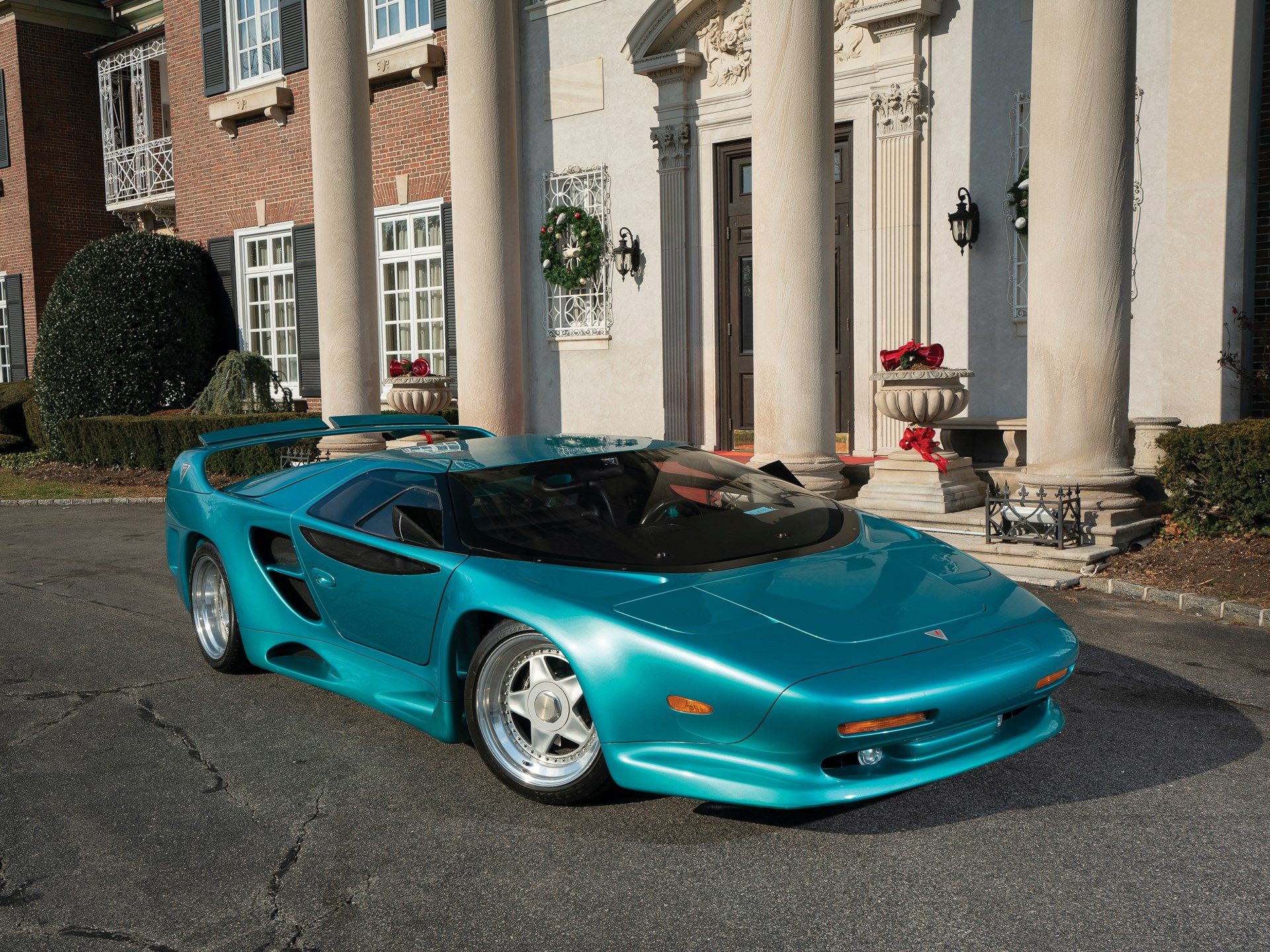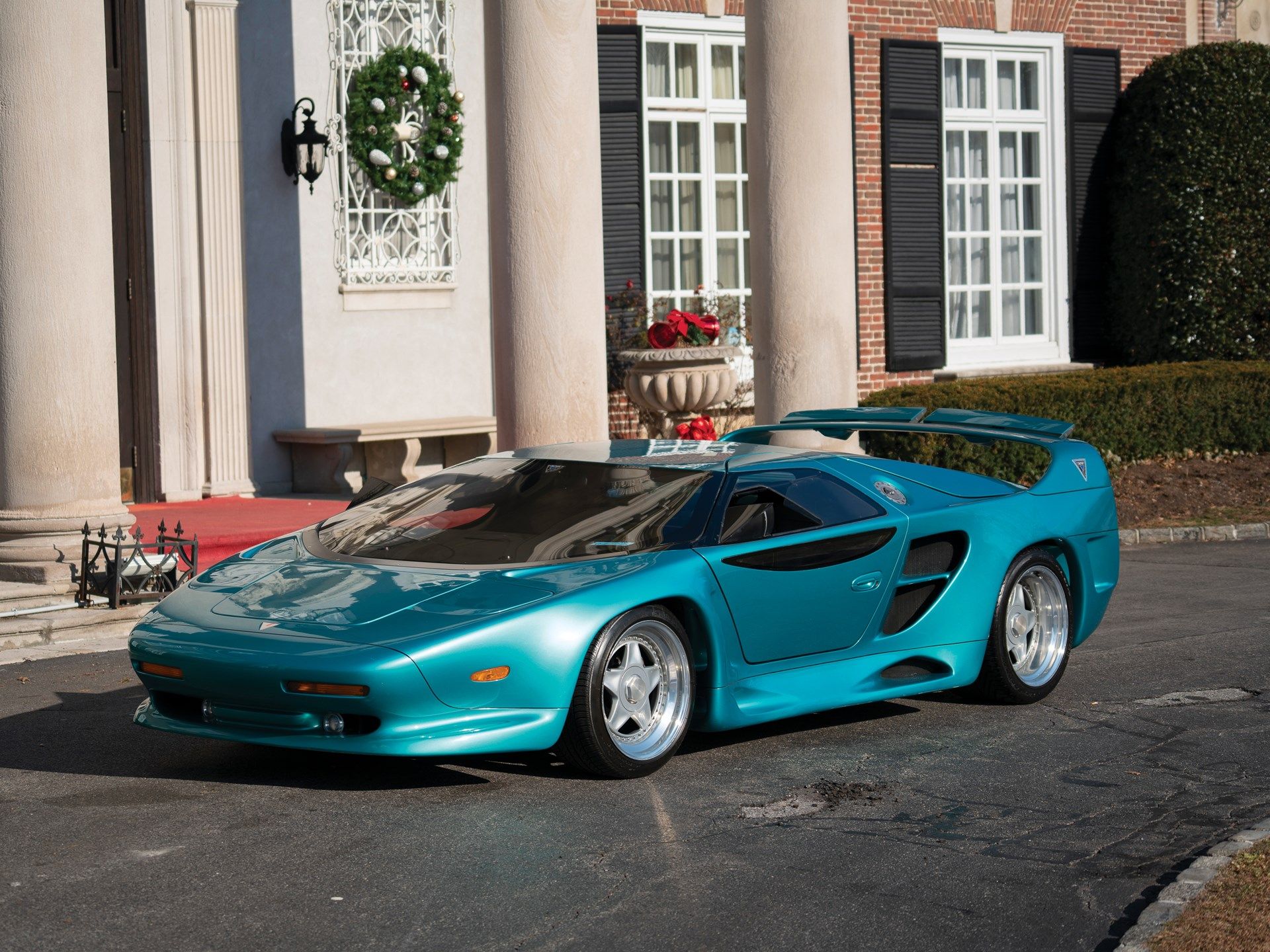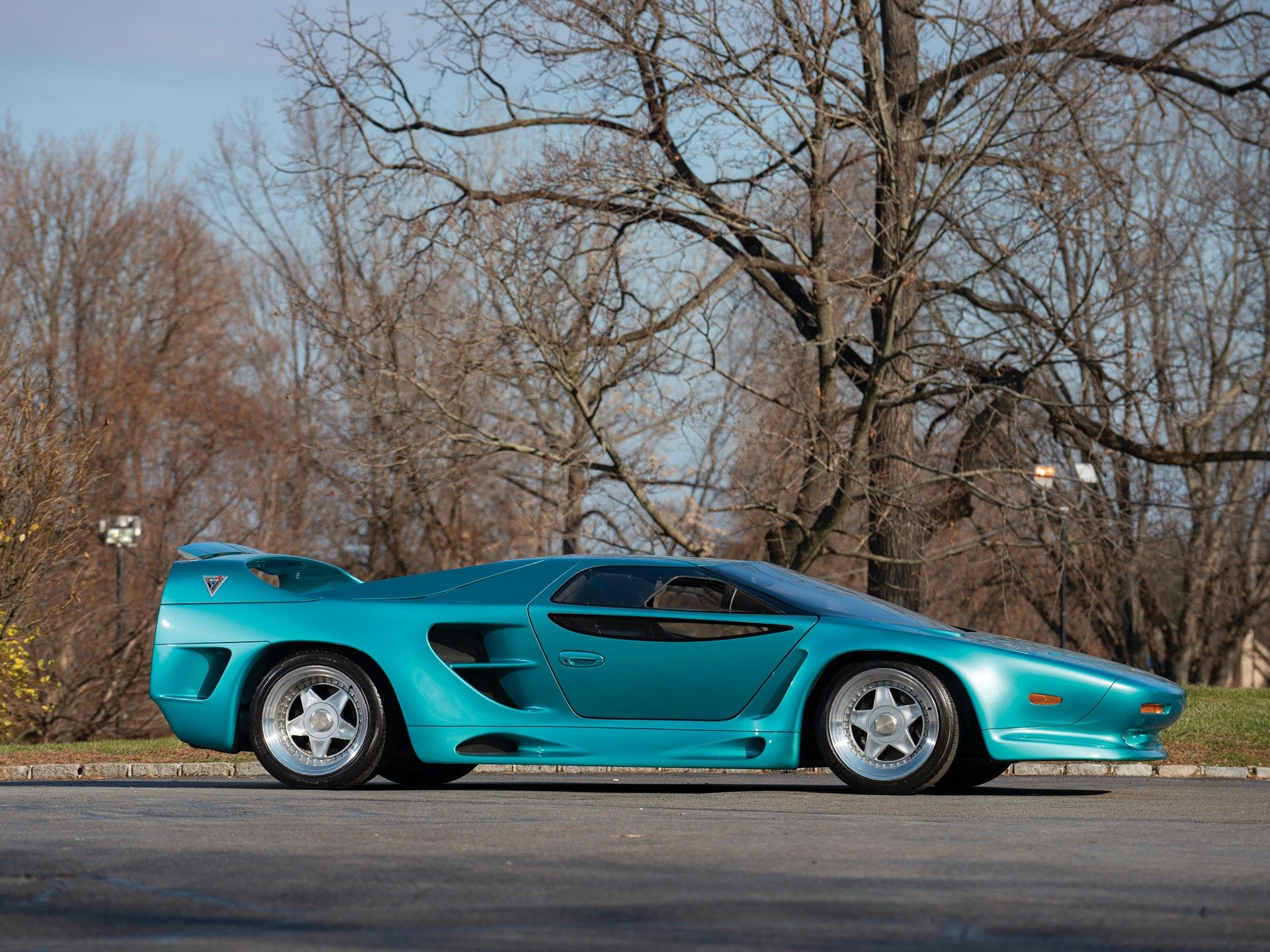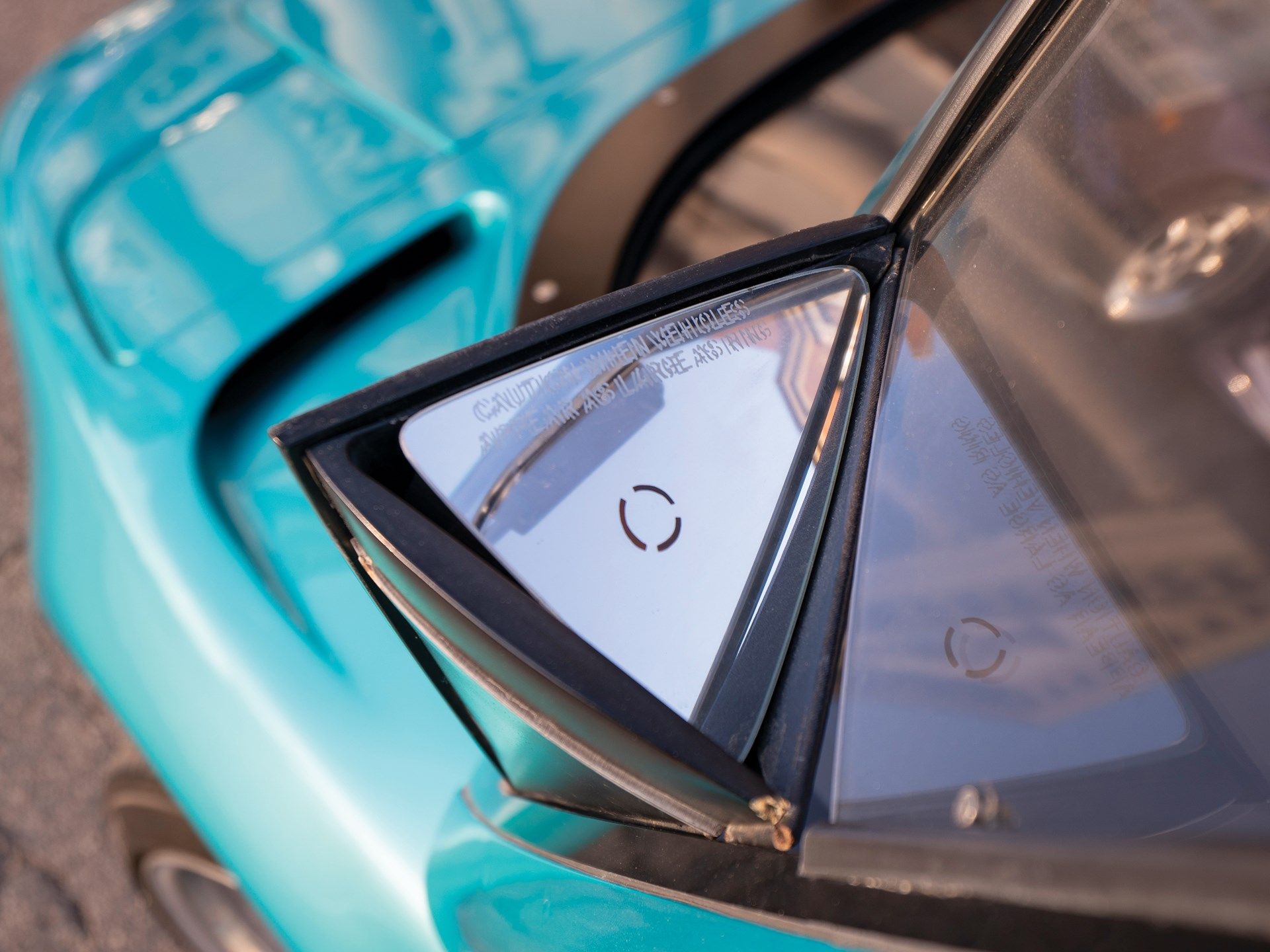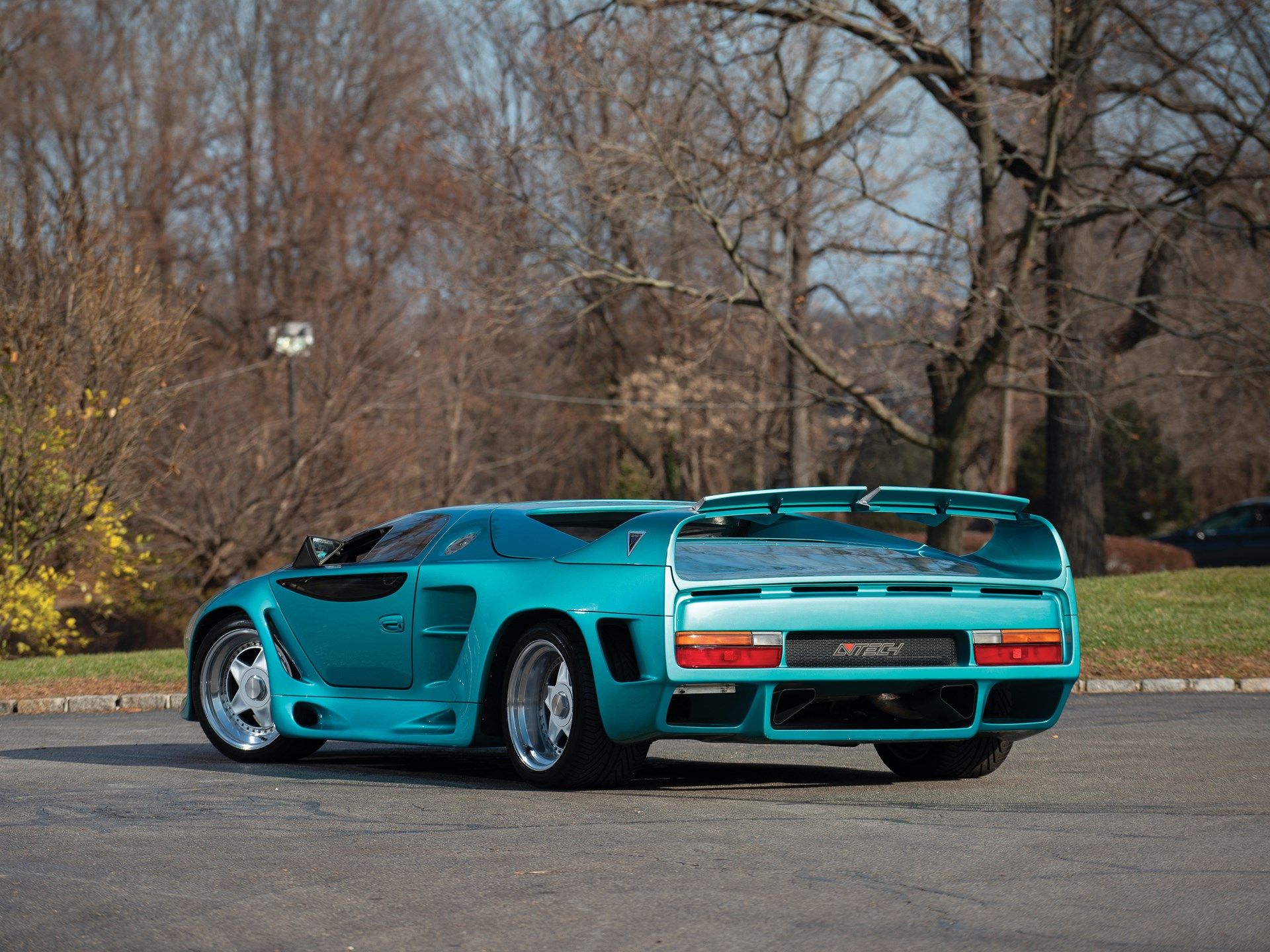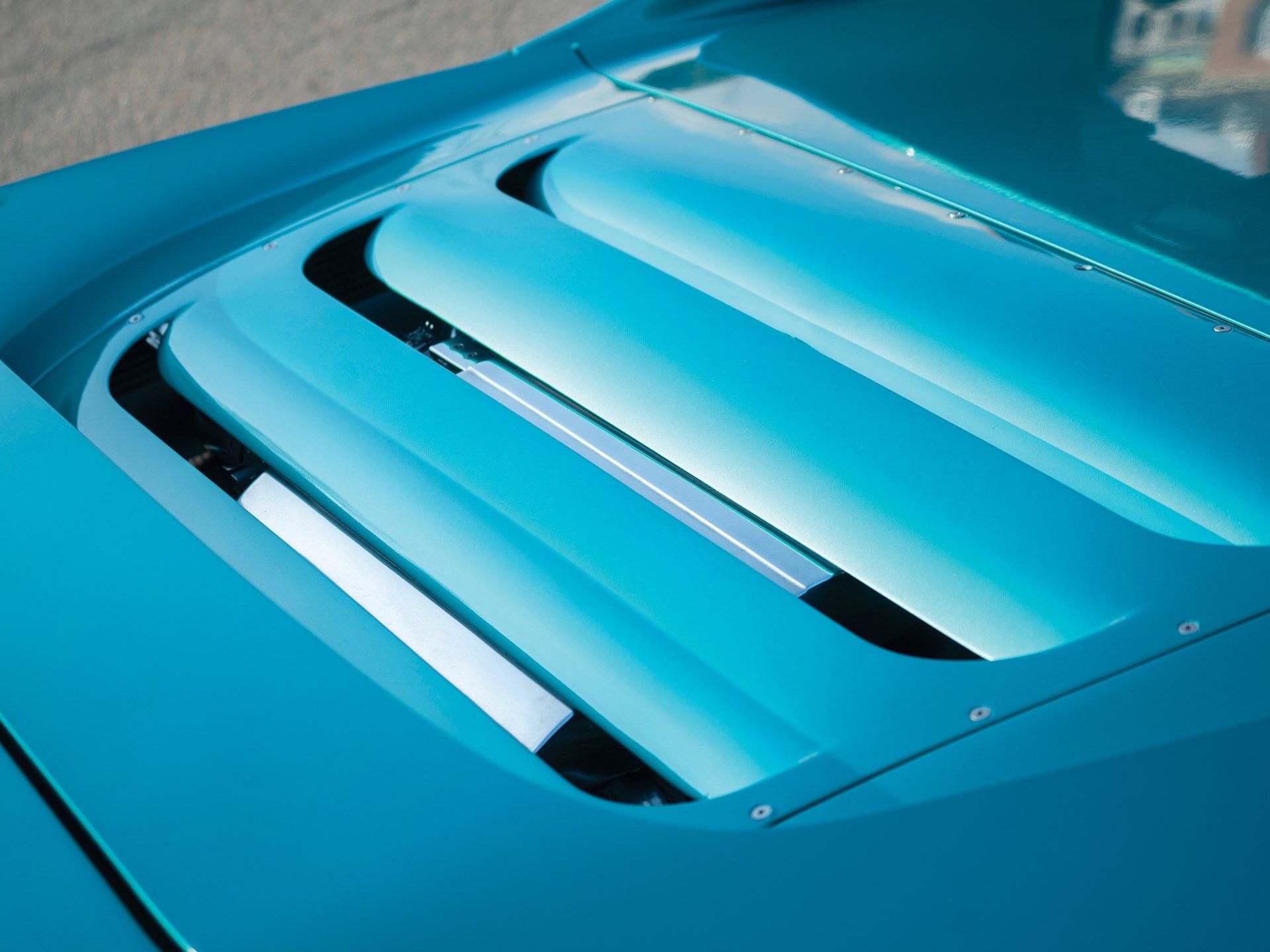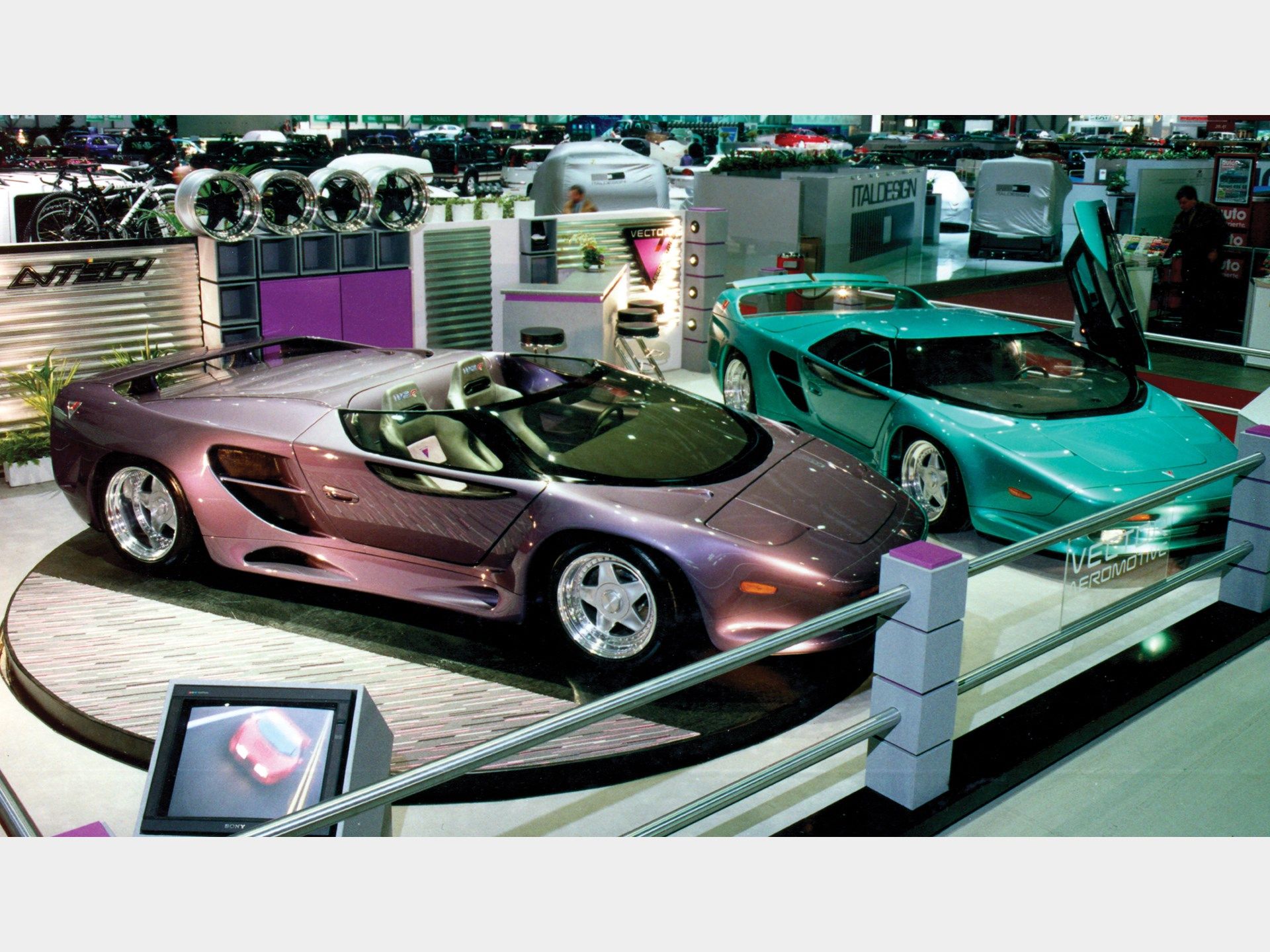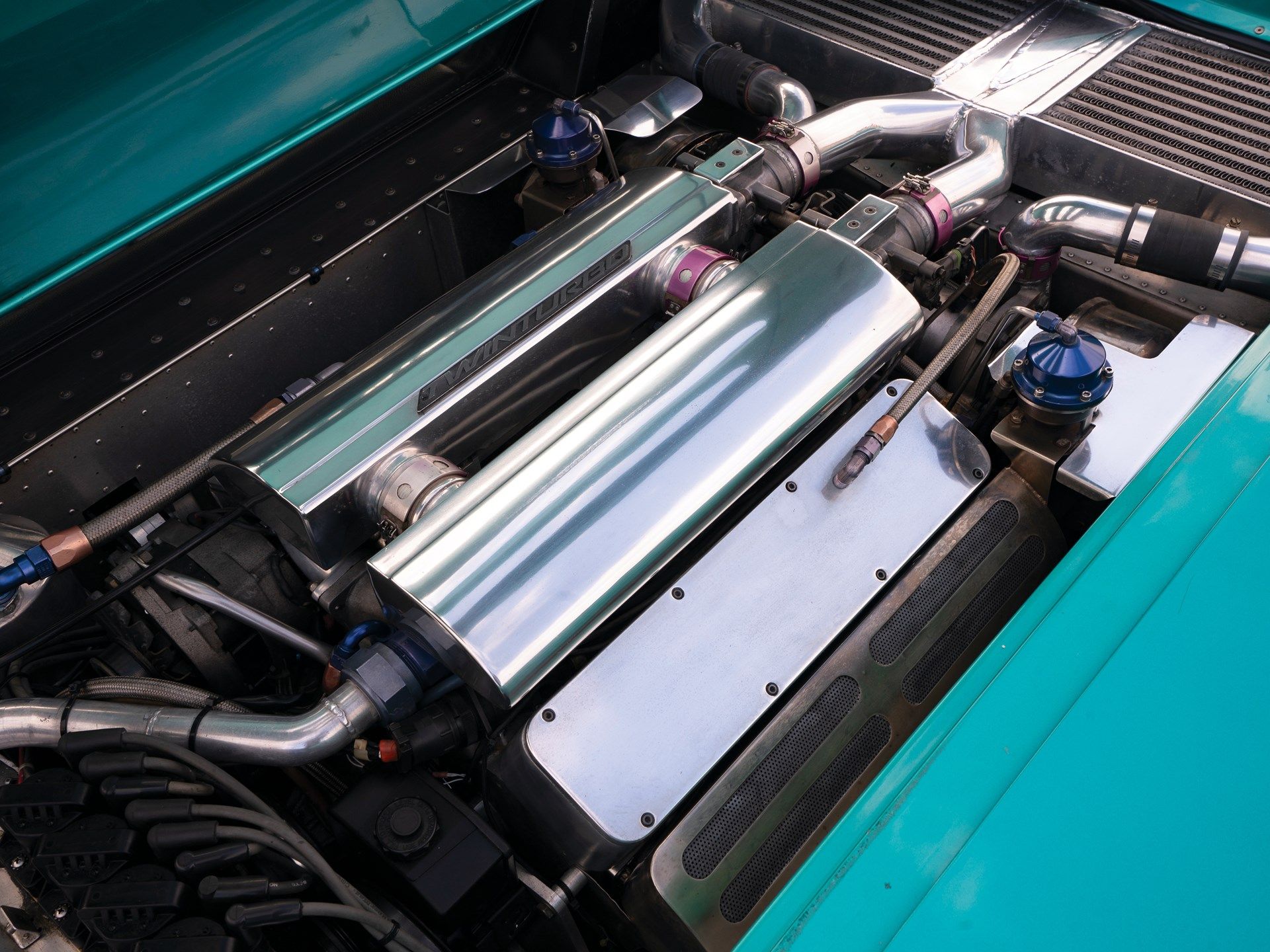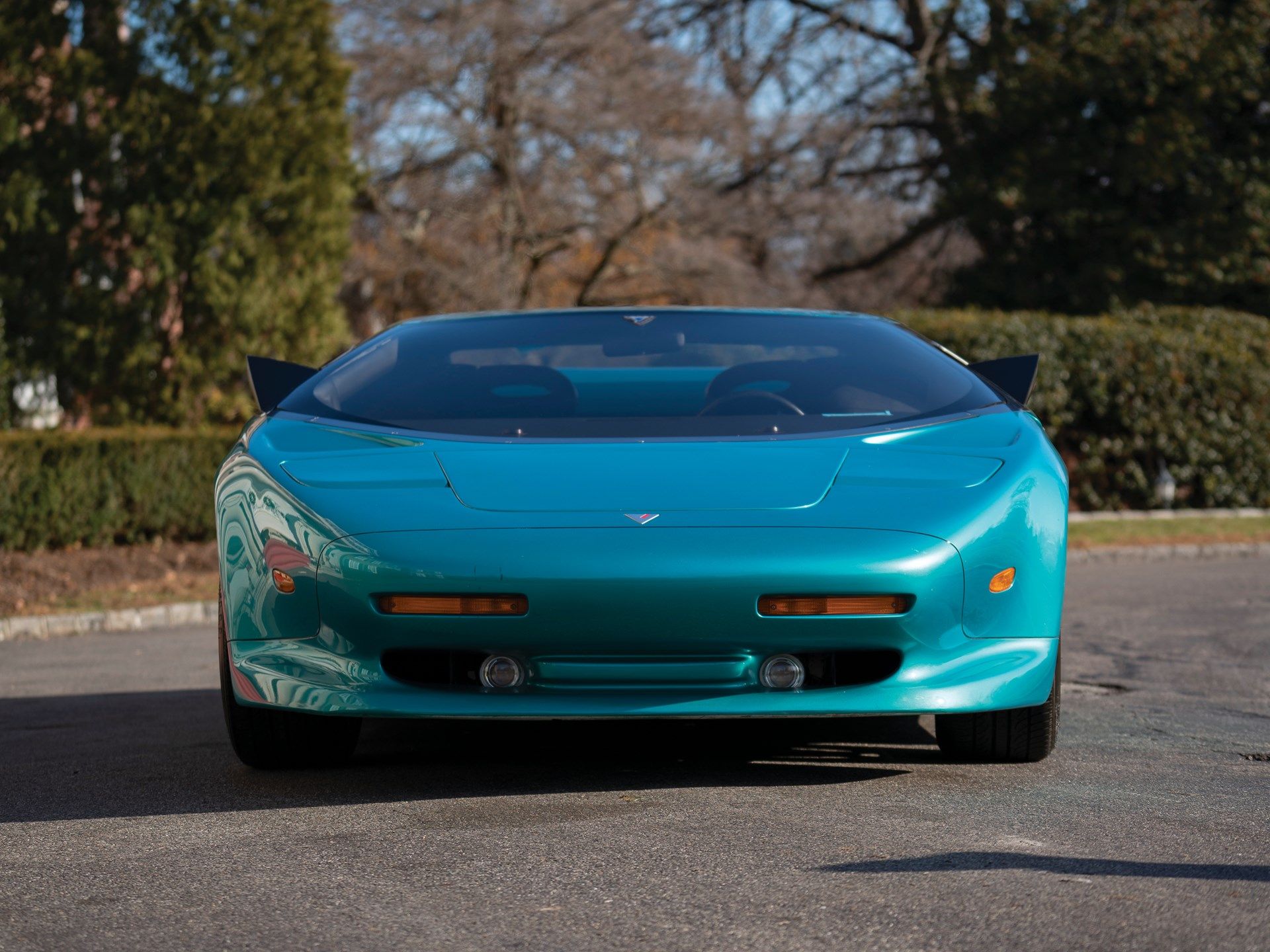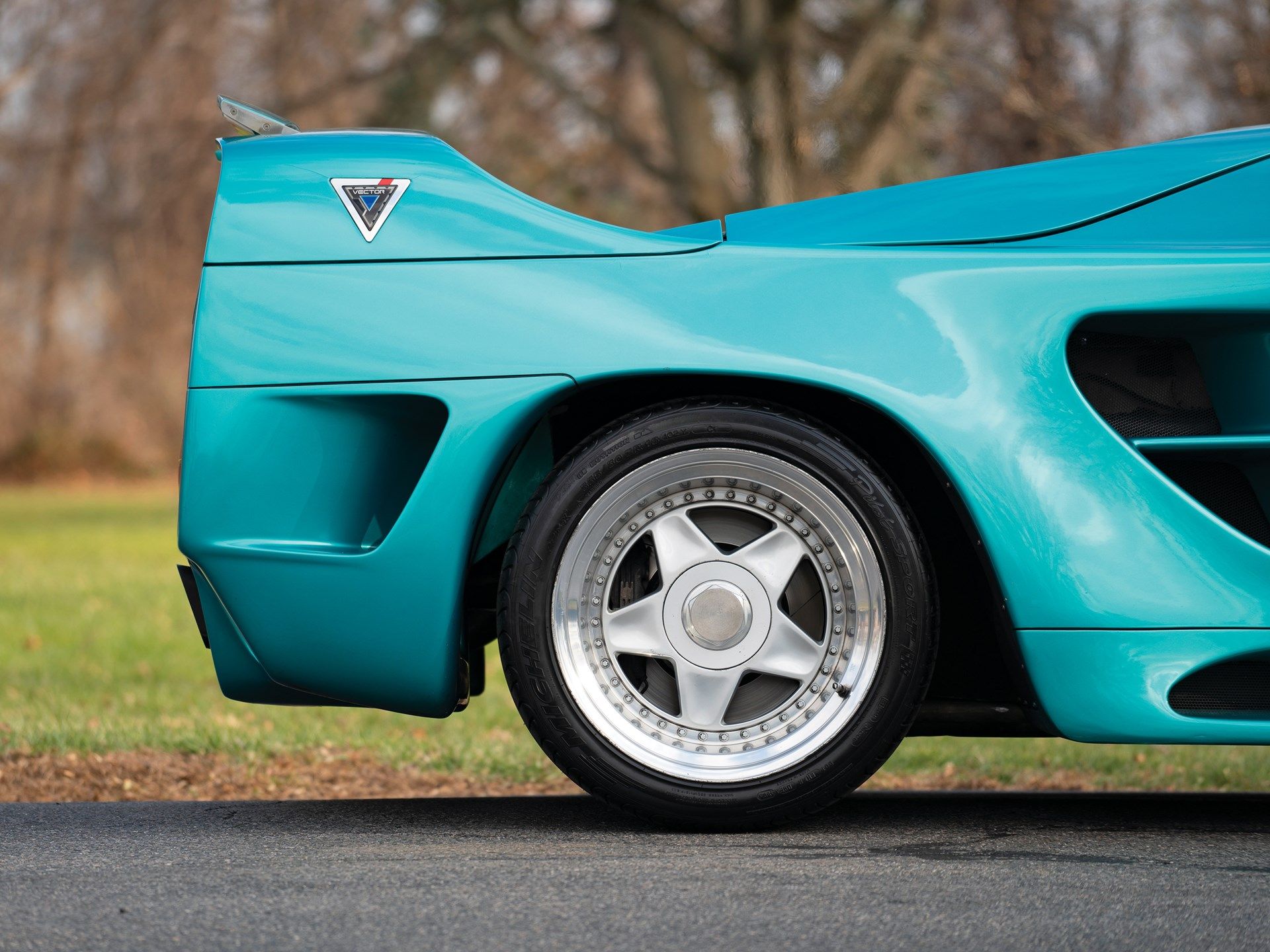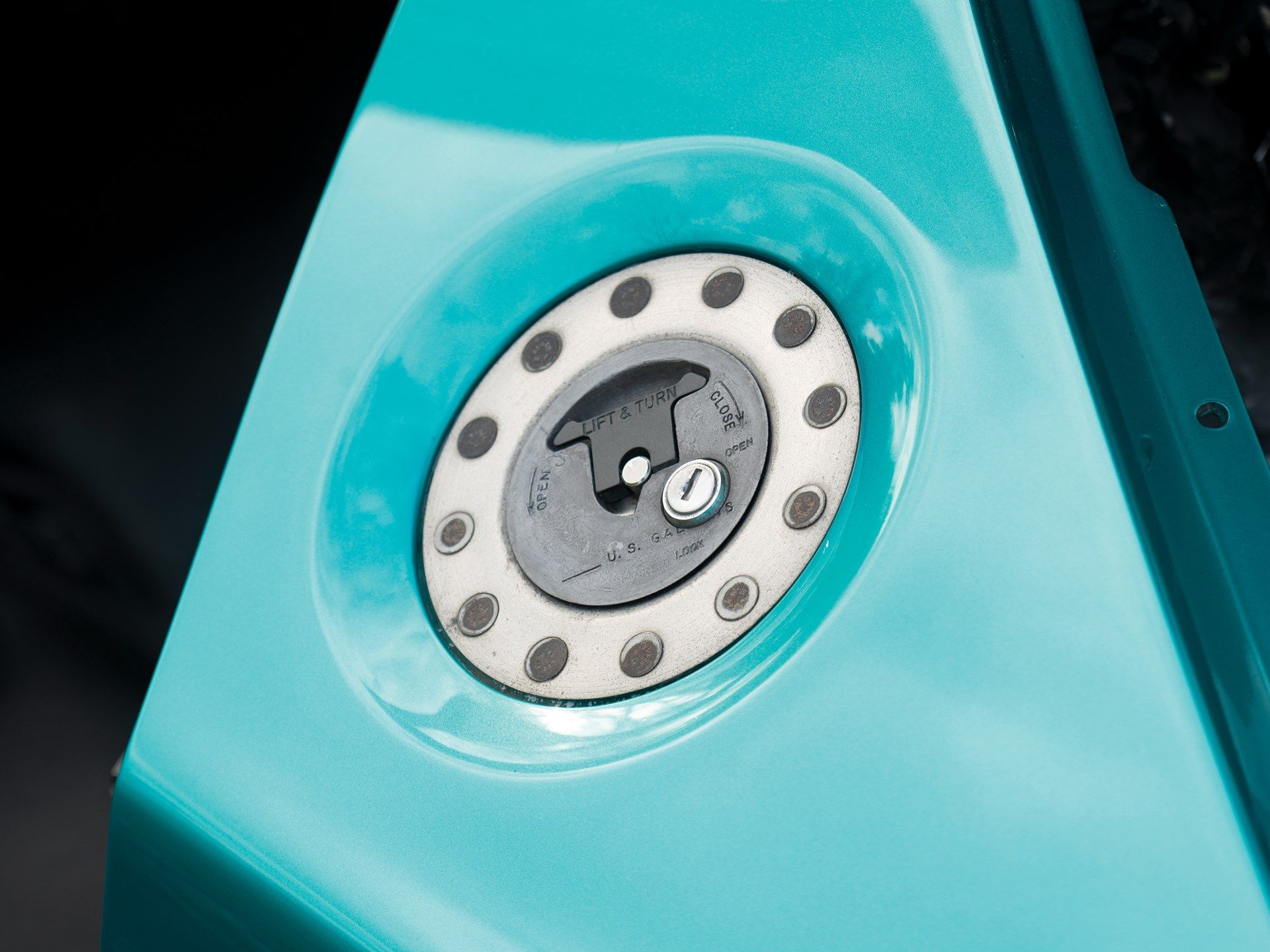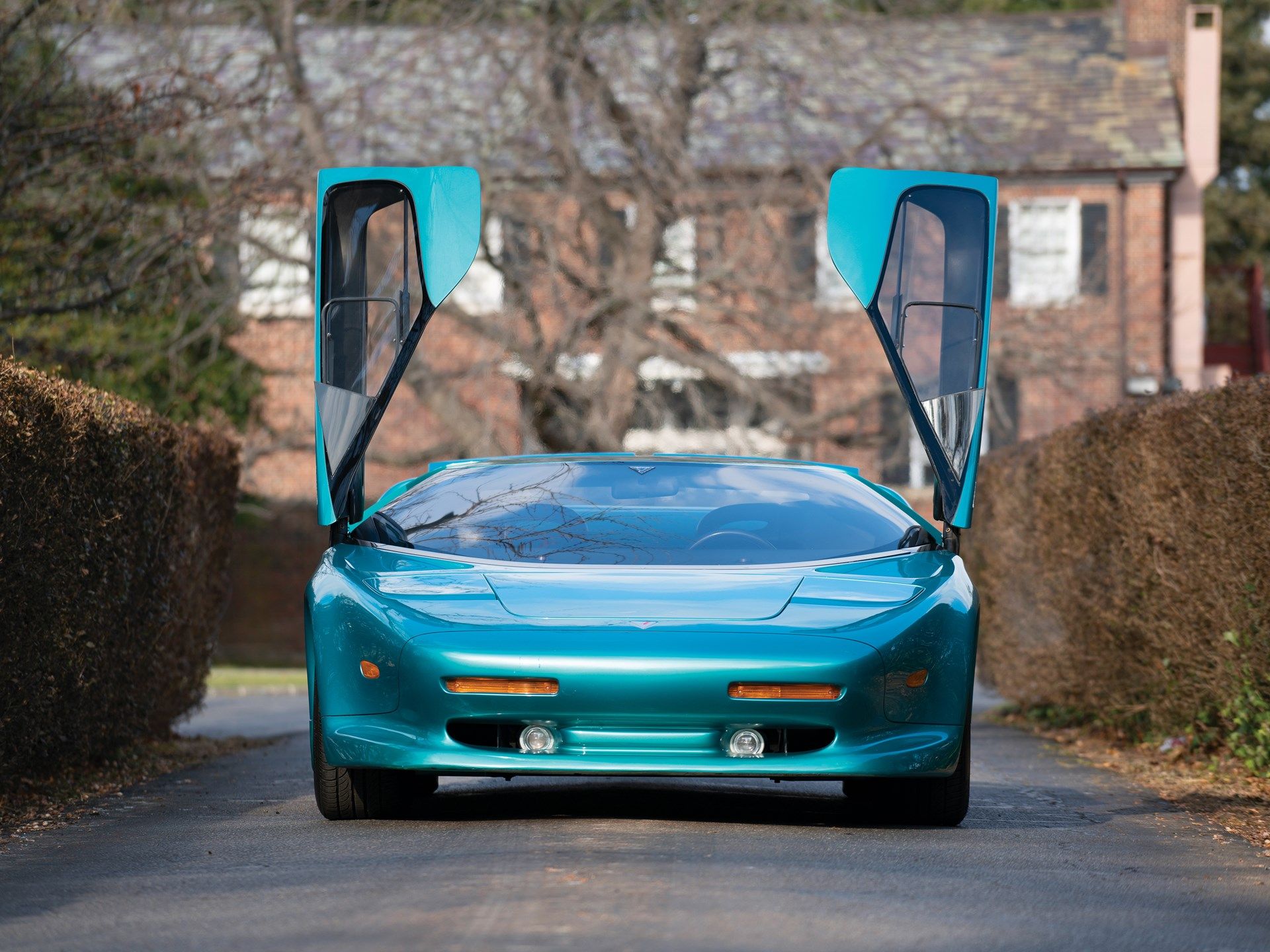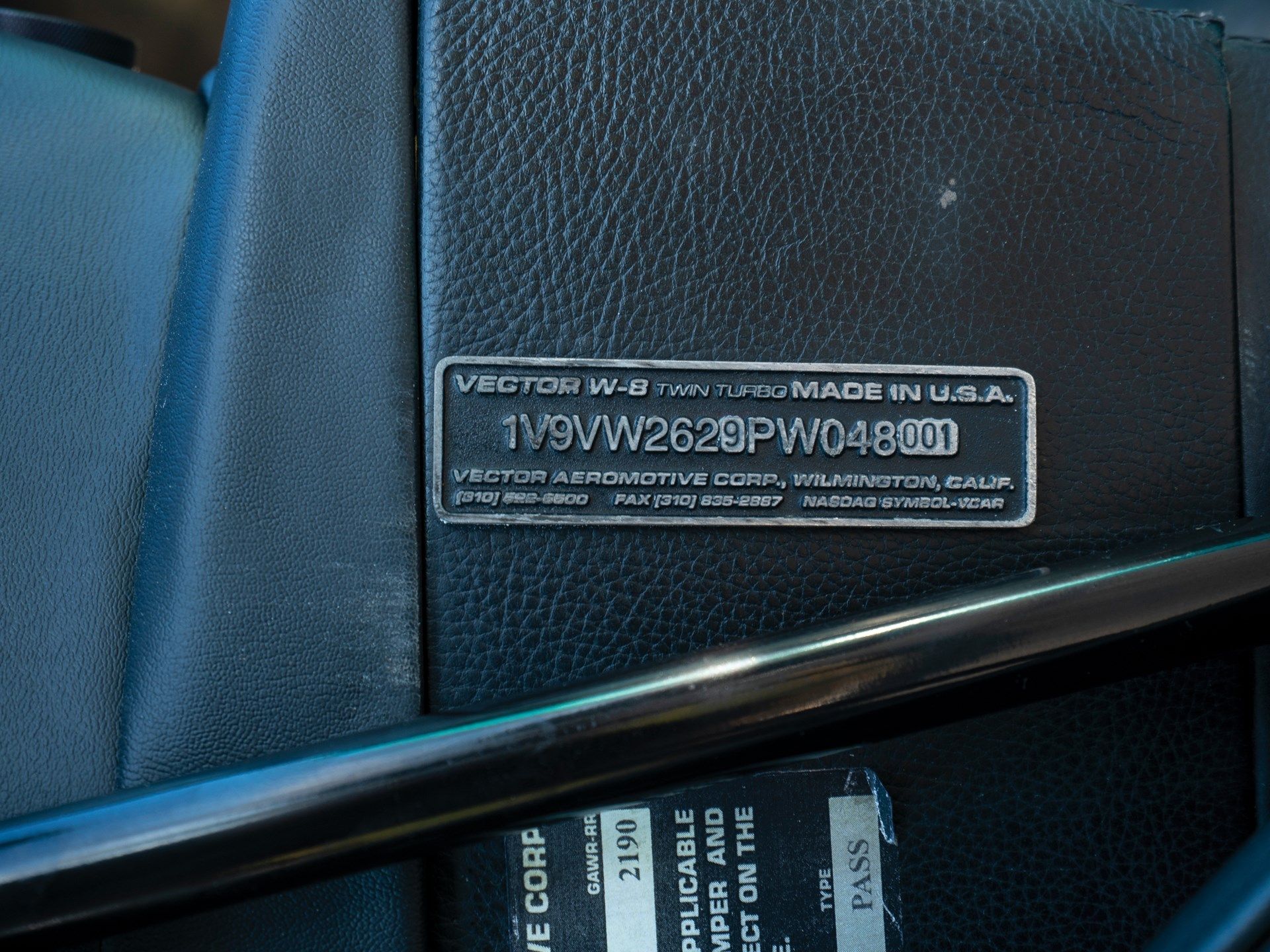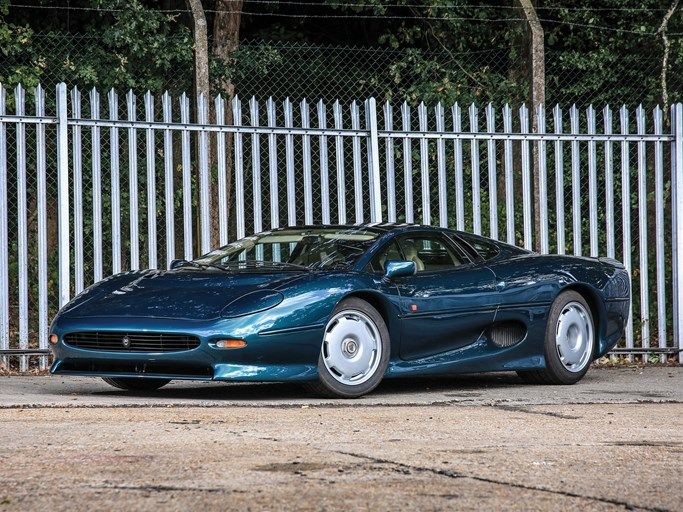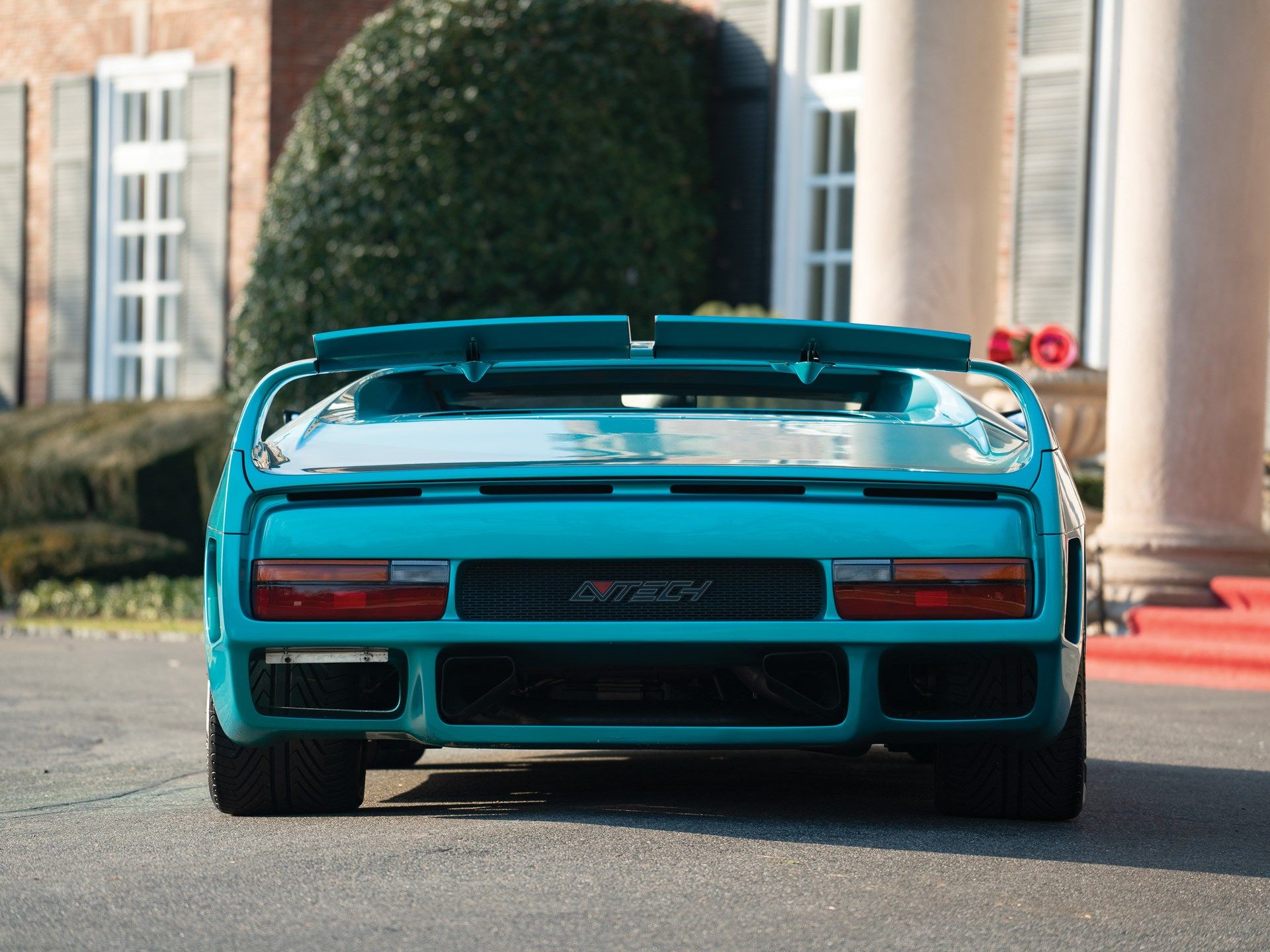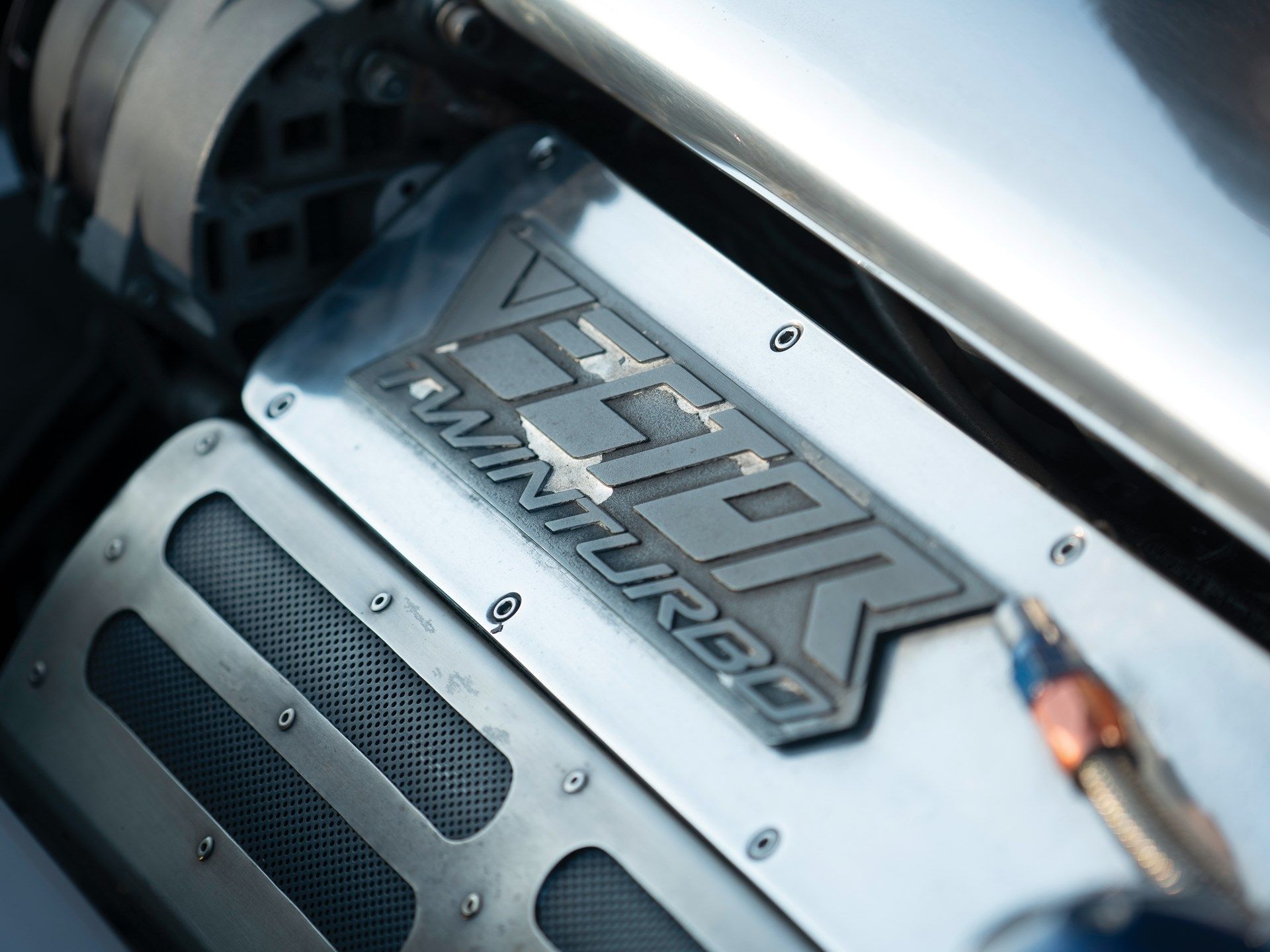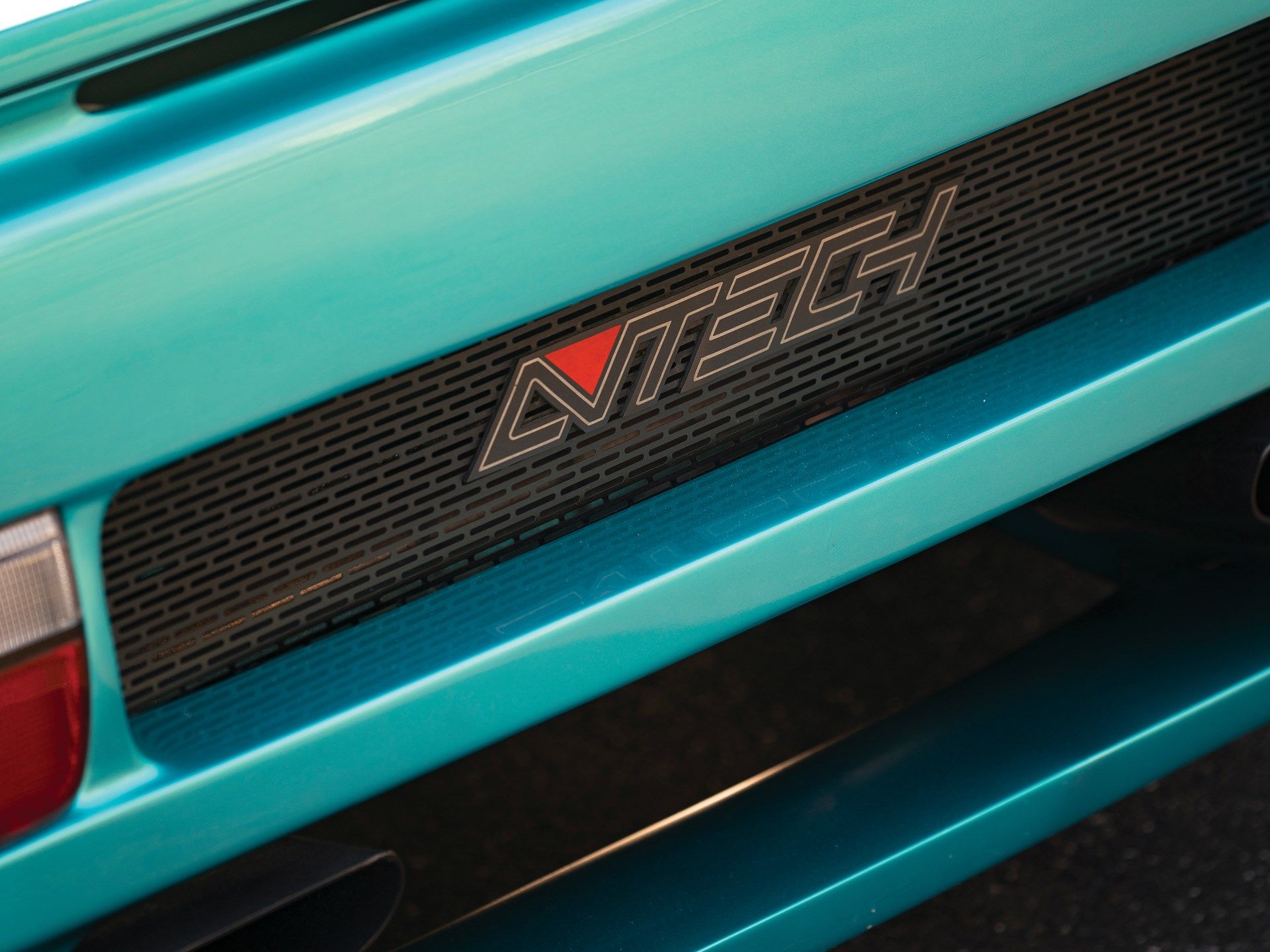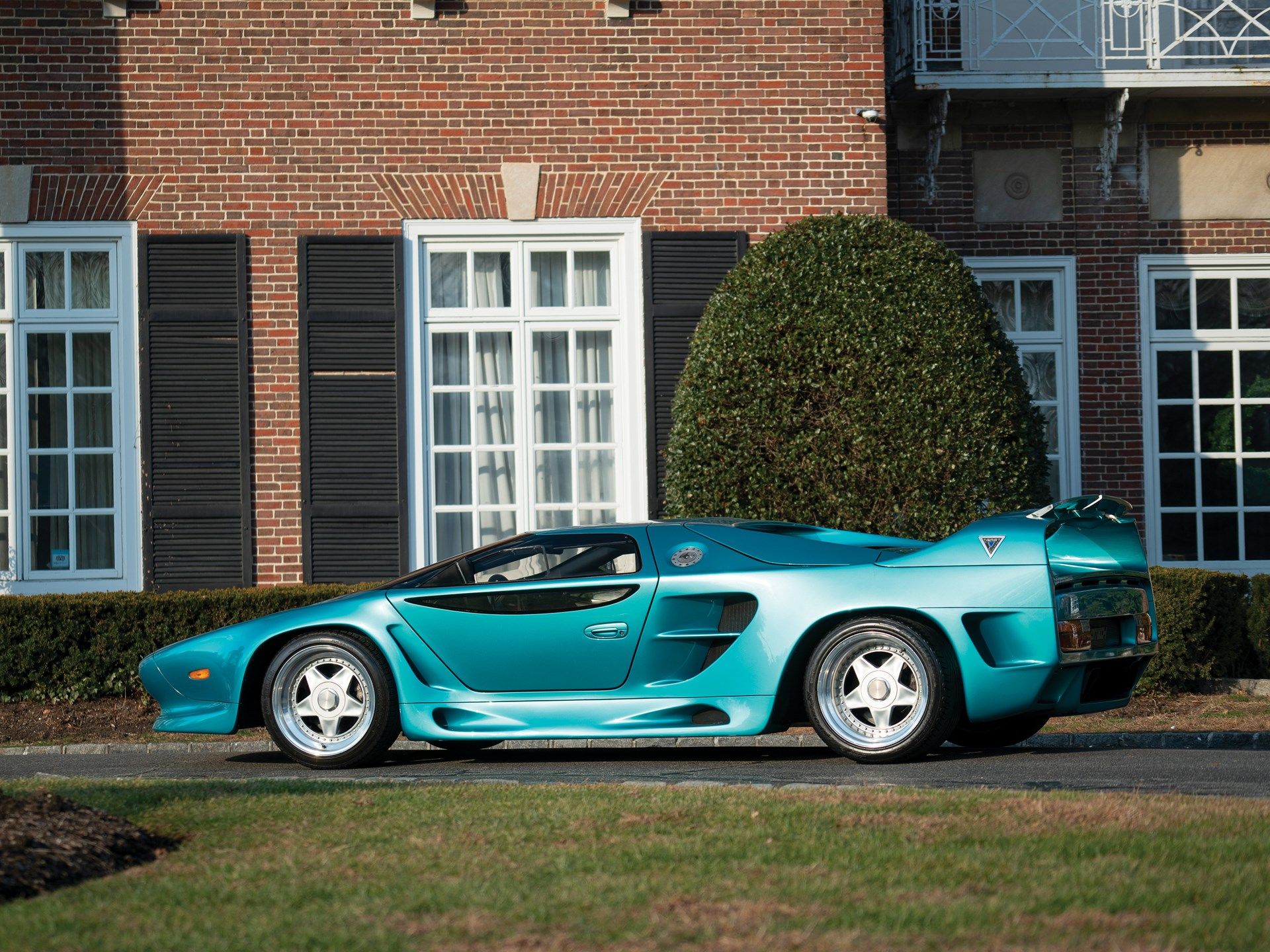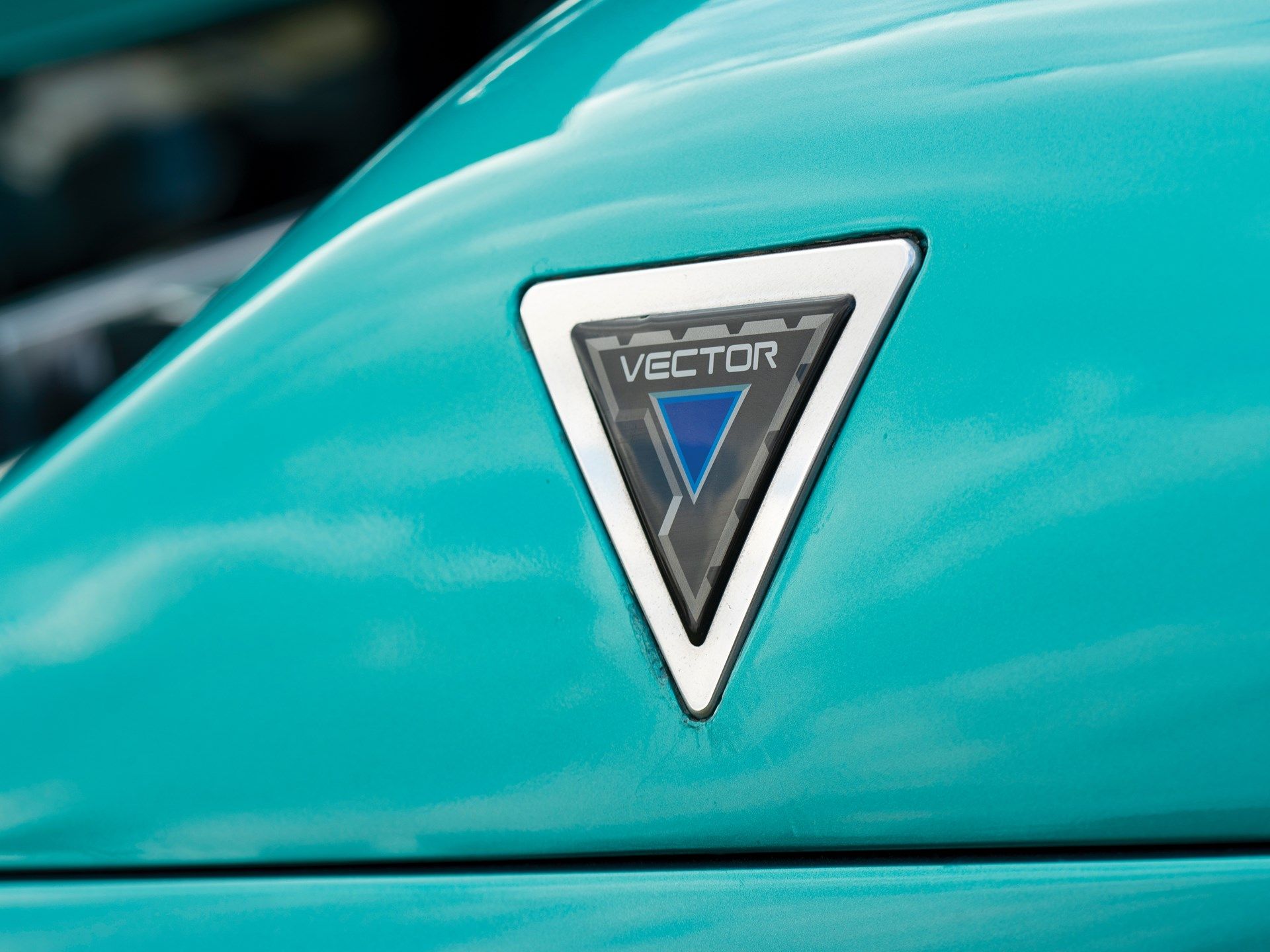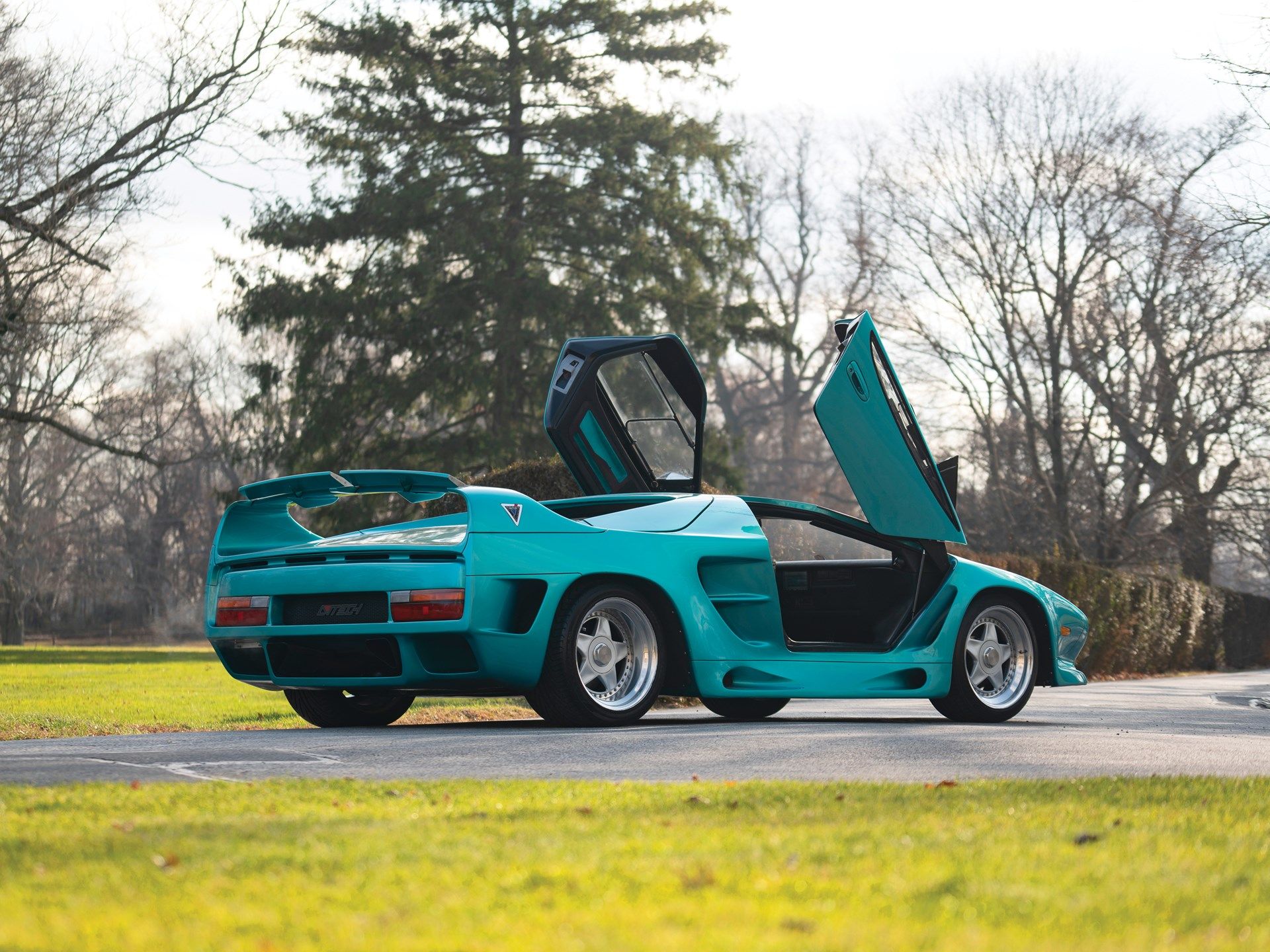The Vector Avtech WX-3 is the rightful successor of the ludicrous wedge-shaped W8, a car that should've built on the buzz created by what many consider to be the first American supercar. However, a hostile takeover prevented the car, in either coupe or roadster guise, from going into production and, now, the two prototypes are up for grabs, reportedly to fund the build of the next Vector.
1993 Vector Avtech WX-3 Prototype
- Make: Array
- Model: 1993 Vector Avtech WX-3 Prototype
- [do not use] Vehicle Model: Array
History and background
Remember the Alfa Romeo Carabo designed back in 1968 by Marcello Gandini?
The cars made by Vector in the very late '80s and early '90s echo the way Robocop would draw a supercar: low-slung, with massive flat surfaces and angular edges all around - the perfect product of the '80s. If anything, the WX-3 that we're talking about here is an evolution of that original design, with rounded corners and less aggressive surfaces meant to take the concept into the '90s. Sadly, this never quite happened the way that Wiegert had planned and the reasoning behind the company's issues that ultimately killed off the WX-3, and its roadster sibling, are rooted in the ever-present funding problem that has made life hard for Wiegert since day one.
You see, Gerald Wiegert funded Vector back in 1971 under the name 'Vehicle Design Force'. An alumnus of the Art Center College of Design in Pasadena, California, Wiegert had amassed some experience working as a consultant at Chrysler, Ford, and General Motors and decided he was now ready to build his own car. Not a Beetle-type, crowd-pleaser, but one that would put the U.S. on the map as a supercar builder.
It took Wiegert five years to unveil the first prototype, simply referred to as 'The Vector', in 1976 at the L.A. Auto Show. Its radical-looking body, that paid tribute in a way to the likes of the Stratos Zero and the Carabo, was the creation of Wiegert himself and, as Road & Track wrote in 1991, was built "from components gleaned from junkyards and scoured from parts-supply houses." This car, later renamed 'W2' as a tribute to both Wiegert and the twin-turbo setup it was equipped with, was shown as a running and driving vehicle in 1978. The poor state of the economy meant that nothing went into production until another decade had passed. By 1991, Vector employed some 60 people and made use of four buildings, enough to make one car per week.
These numbers are impressive enough but Wieger already looked on and, for 1992, he prepared the next model of Vector Aeromotive: the WX-3. It was first presented at the 1992 Geneva Auto Show as a design study, sans engine. 12 months later, the coupe with a wing that would put an F40 to shame, was joined at the Swiss auto show by the company's first roadster, the WX-3R. One was painted in teal and the other in a dark tint of purple, the colors of the Aquajet logo, another company started by Wiegert.
At the time, Megatech was a major shareholder in Vector, Wiegert selling 57% of the company for almost $8 million to raise money for his new project. Apparently, while Wiegert was away at the Geneva Auto Show, "two of his directors were going to be fired. While the show was going on, the soon-to-be-ex-employees of Vector were looking to secure their positions within the company. The pair convinced to keep them and remove Wiegert instead," according to an article on Vector's history on HowStuffWorks.
Upon his return to the company's headquarter in Wilmington California, Wiegert was confronted by Vector's CFO, John Pope, who said that "his options were to resign and leave, quit the presidency and become head of design, or be fired." What followed was, effectively, a hostile takeover staged by Megatech, Wiegert being sacked from his own company in the process. However, he managed to win the rights to the Avtech name and the WX-3s design, disallowing Megatech from putting it into series production.
A Times article from 1994 tells us that "Megatech is a Bermuda-registered company jointly owned by Hutomo (Tommy) Mandala Putra, the youngest son of President Suharto, and Mycom Setdco, a Bermuda-based subsidiary of Mycom Bhd., the Malaysian property and gaming concern." The article states that Megatech bought Lamborghini from Chrysler for $40 million (about $67.6 million today). Why did they do it? A Chrysler spokesman is quoted in the same piece saying that "Lamborghini and its engineering department would aid in their interest in expanding into Formula 1 racing and developing technology for so-called supercars, expensive high-performance racing cars sold for road use." What is more, Cervone pointed out that Vector had "no development skills" and that "with Lamborghini, they'll be getting a huge set of brains."
All the "brains" didn't help Megatech and both its F1 project and the Vector M12 were downright failures.
1993 Vector Avtech WX-3 Prototype Exterior
The Avtech WX-3 walks in the footsteps of the W8 in terms of its outlandish styling. It has a huge wing with extra flaps hanging at the back, narrow two-piece side windows, a wide windscreen, F40-esque rims, pop-up headlights and an array of flat surfaces, edges, and air inlets that make anyone around aware that it's a supercar.
Up front, the nose narrows down the same way it does on a W8 although, this time, the bumper is round and the horizontally-positioned indicators sit flush within. Right below, there's a rounded air inlet with a central divider and two fog lights placed on either side. Along the sides of the nose, you'll find some extra indicators put there to make the car road-worthy. In fact, Wiegert himself drove the WX-3R extensively putting almost 9,000 miles on the odometer over the years. What is more, the original W2 prototype is arguably the most-driven prototype ever having covered over 100,000 miles between the time of its presentation in 1978 and the release of the W8 in 1989.
The car has pop-up headlights that are positioned on either side of the trunk lid. Wide air vents open up just above the headlights and they follow the line of the wraparound windshield that's similar in shape to what you'll find on '80s Group C prototype endurance sports cars.
The multi-piece, deep-dish, five-spoke wheels are similar to Ferrari's legendary star design but nothing else on the Vector is remotely similar to a Prancing Horse.
You've got the huge air inlet carved into the rear quarter panel and divided by a horizontal bar, then you have two more air inlets incorporated in the rocker panels that face one another, and there's also a cut through the front wheel wells to let the air out. The car features split side windows: there's a bigger window on the angled part of the door and then, below the car's beltline, another narrow strip of glass. To keep the design slippery, the exterior rear-view mirrors are triangular.
The back of the stillborn WX-3 is less of a looker. There's an array of rectangles that basically make up the rear fascia. The center panel is in a recessed position with the headlights in the lower corners. In the middle, there's a grille with the Avtech logo printed on it. Four horizontal openings let hot air out just below the trailing edge of the rear bodywork. The lower part of the bumper is pierced by three more rectangular openings, those outboard offering a great view of the fat rear tires that cradle the 18-inch rims.
According to the same HowStuffWorks article, the WX-3 was put in a wind tunnel by Megatech and "it was found to be aerodynamically sound, but would have left the engine starved for air." In fact, upon the launch of the M12, the company's new CEO, David Peter Rose, claimed that "We kept the air conditioner and a front cross beam from the original car. That's it," in a discussion with Car and Driver.
1993 Vector Avtech WX-3 Prototype Exterior Dimensions
|
Wheelbase |
103.0 inches |
|
Length |
184.0 inches |
|
Width |
80.0 inches |
|
Height |
42.5 inches |
1993 Vector Avtech WX-3 Prototype Interior
The WX-3, like its predecessor, has an aerospace-inspired interior. The well-padded three-spoke steering wheel with teal accents sits in front of a very busy dashboard. From a first look, you'd think it's the same thing taken straight from the W8 but, in fact, Wiegert & Co. apparently worked to improve the ergonomics.
In any case, the distinctive feature of the WX-3 prototype is its bench seat that can house three adults because there's no shifter in the middle to worry about. This is something that was also seen on W8s that were sold abroad but it wasn't meant to stay as the WX-3 would've transitioned to series production. Instead, a two-seat layout was envisioned and applied on the 1993 WX-3R.
1993 Vector Avtech WX-3 Prototype Drivetrain
The WX-3 as we see it today comes with a 7.0-liter, Rodeck, twin-turbocharged, V-8 that's said to put out about 1,000 horsepower with the boost dialed all the way up and about 800 ponies in full safety at 5,800 rpm. This is basically the same engine as seen in the W8 with one extra liter of capacity. The torque increased from 630 pound-feet on the W8 to 700 pound-feet of torque at 4,900 rpm. It has an improved flow dual plenum and throttle-body intake tract rather than the Corvette-based system used on the W8 production cars.
In fact, after Megatech bought all those shares, development started on a new V-12 that was designed by Ryan Falconer. To cut development time, the basic architecture of the new engine was similar to that of the Chevrolet-based Rodeck V-8. The engine was shown in brochures but it never made it inside a chassis.
Underneath the car's skin, there's the same structure as on the W8 with cross beams front and rear, a setup that proved very safe. Indeed, the car was manufactured using many avant-garde materials from the aeronautical world, but this was also reflected in the car's high MSRP.
Originally, the WX-3 was said to cost $785,000 with the 1,2000 horsepower, a lot even in comparison with the W8 which had a price tag of just under $500,000 in 1991. In comparison, an F40 with the appropriate modifications for the U.S. market cost at the time just $400,000 and a Diablo had a sticker price of just $211,000. Then again, if you compare this with the list price of the McLaren F1, $800,000, it doesn't seem that absurd. After all, the WX-3 in top trim was supposed to easily exceed the 618 horsepower of that BMW-developed V-12 and achieve a top speed of 250 mph, 10 mph more than the F1.
1993 Vector Avtech WX-3 Prototype Specifications
|
Engine (in the prototype): |
7.0-liter, transversely-mounted, twin-turbocharged, Rodeck V-8 |
|
Claimed output: |
Between 800 and 1,000 horsepower at 5,800 rpm |
|
Claimed torque |
700 pound-feet of torque at 4,900 rpm |
|
Claimed performance: |
0 to 62 mph in under 4 seconds and a top speed of over 240 mph |
|
Brakes: |
13.5-inch ventilated disc brakes all around with ABS |
|
Suspension: |
double A-arms up front and a De Dion axle at the back with four trailing arms. Koni adjustable shocks, with concentric springs, are fitted on all four corners |
|
Gearbox: |
3-speed automatic |
|
Weight: |
3,571 pounds |
Conclusion
The WX-3 is another car that slots nicely in the "what if?" category. It definitely looked the part but the problems between Wiegert and Megatech prevented it from going into production. Of course, it's hard to predict whether the WX-3 would've been the breakthrough that the M12 never was, considering the extremely narrow niche that existed at the time for this kind of cars.
What's clear, though, is that these cars are real, driveable automobiles and they are up for grabs. The DuPont Registry ad states that the two cars will be sold together for $3.5 million to help fuel Wiegert's dream of building the WX8. The person who will pay this kind of money for the cars will, in exchange, "sign a 12 or 24 month buyback provision on both Vectors with a bonus upside for what was paid by purchaser or exchange for stock in The New Vector Motors Corporation for double what was paid in a sales transaction as these two Vector Prototypes are priceless as related to Vector Legacy and History." Is that a good deal? Is that just more vaporwave from Wiegert? Only time will tell.
(0(Further reading}0}
Read our full review on the 1992 Vector W8

